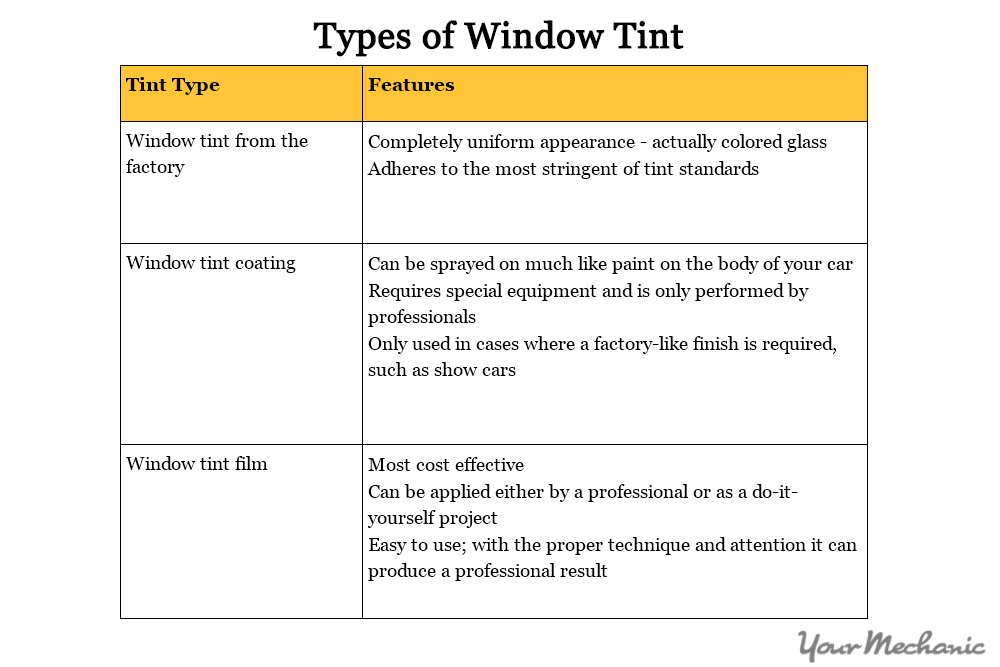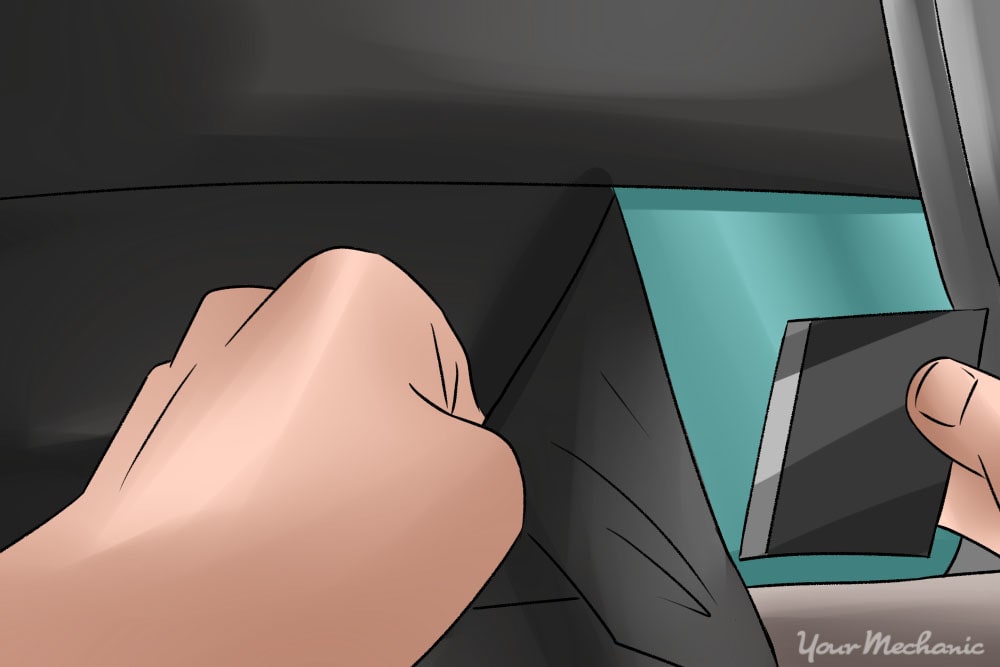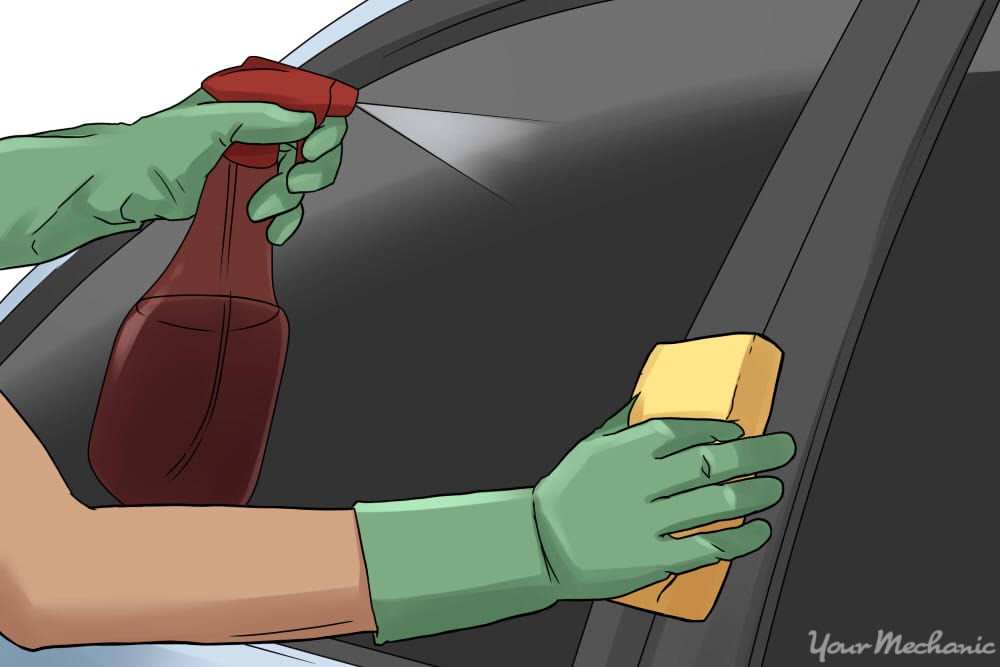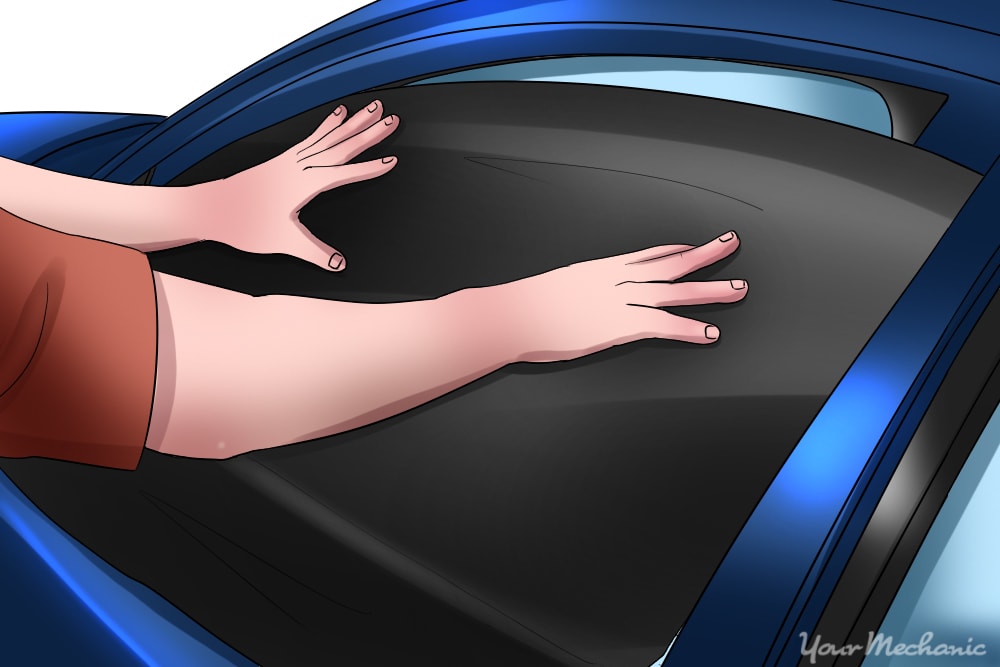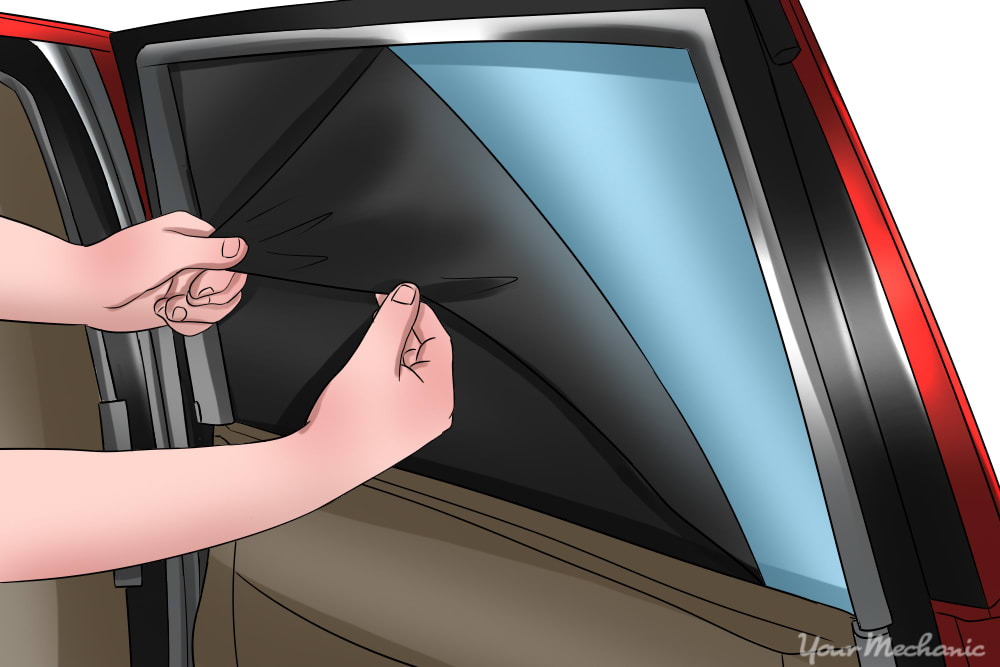

Window tint is a popular car customization today. It is used for several reasons, including:
- Increased visibility by reducing glare and the bright sun
- Privacy while you are inside your vehicle
- Protection from the sun’s UV rays
- Security from theft of your belongings
Your windows can be tinted in three different ways, as shown in the table below:
- Tip: Visible Light Transmission percentage (VLT%) is the amount of light that passes through the tinted glass. It is an accurate measurement that law enforcement uses to determine if window tint abides to the legal limit.
It can be necessary to tint just one window. A situation may arise where:
- A window was replaced due to vandalism
- The window tint film began peeling
- The window tint was scratched
- Bubbles formed in the window tint
If you have to install window tint on just one window, match your window tint as closely as possible to the rest of the windows. You can get samples of tint colors and VLT% and compare with your windows, have a tint specialist or law enforcement officer measure your VLT%, or find the original window tint film specifications on your invoice from the original installation.
- Tip: Always check your local regulations to make sure your window tint is within the legal specifications. Use a resource such as this one.
Materials Needed
- Clean cloth
- Razor blade or sharp knife
- Razor scraper
- Residue remover
- Scotch tape
- Small squeegee
- Spray bottle with distilled water
- Window cleaner
- Window tint film
Part 1 of 3: Prepare the window surface
You will need to make sure the inside window surface is free of all dirt, debris, streaks, and any old window film.
Step 1: Remove any existing window tint. Spray window cleaner onto the window and use the razor scraper from the edge to peel it off.
Keep the scraper at a 15-20 degree angle with the glass and only scrape forward.
Make sure to keep the surface where you are scraping lubricated with window cleaner, which serves as a protective barrier from scratching the glass.
- Note: Old window tint that has been exposed to the sun will be most difficult to remove and will take some time to get off.
Step 2: Remove residue from the window with the cleaner. Use a clean rag wet with the residue remover, and work at the stuck-on spots with your fingertip.
Step 3: Clean the window thoroughly. Spray glass cleaner onto a clean cloth and wipe the window to a streak-free finish.
A vertical motion followed by a horizontal motion works best. Roll the window down slightly to clean the upper edge that goes into the window track.
You are now ready to apply the window tint film. There are two options for applying tint film to your windows: using a roll of window tint that needs to be trimmed and fitted, or a pre-cut film piece.
Part 2 of 3: Cut the window tint film to size
- Note: If you are using a pre-cut section of window tint film, skip to Part 3.
Step 1: Cut the film to size. Unroll a section of window tint larger than the window and cut it off with your knife.
Step 2: Fit the piece of film to your window. With the window rolled down a couple inches, line the top edge of the window tint film up with the top of the glass.
The rest of the film should overlap on the sides and bottom.
Tape the window tint film securely in place with the scotch tape.
Step 3: Score the window tint film with your sharp knife. Use a freehand method and make sure to leave even spacing all around.
The edge of the window tint should be approximately ⅛-inch from the edge of the glass. Leave the bottom of the tint long at this point.
Step 4: Cut the film along the scored line. Remove the film from the window glass and trim along the scored line.
Be careful and precise as flaws in your cuts may be exposed.
Step 5: Check your trim and cut the bottom edge of film. Tape the film in place on the window again.
Roll your window all the way up and test your tint film’s fit.
Once the window is rolled all the way to the top, trim the bottom edge of the window tint film tightly against the bottom edge.
Part 3 of 3: Apply window tint film
- Tip: Always pre-fit the window tint before applying to the window, even if you purchased pre-cut film, to ensure you have the right size.
Step 1: Mist the inside of the window with distilled water. The water acts as a buffer layer when adjusting the position of the window tint on the glass, and activates the adhesive on the window tint film.
Step 2: Remove the window tint film protective layer carefully. Avoid touching the adhesive side of the film as much as possible.
The adhesive will be exposed and dust, hair, or fingerprints that touch it will be stuck in the window tint forever.
Step 3: Apply the adhesive side of the window tint to the wet glass. Position the film on the window where it needs to go and gently hold it in place.
The edges will have a small ⅛-inch section where window tint does not go so it doesn’t roll into the window track where it can peel.
Step 4: Remove air bubbles in the tint. Using the small squeegee, gently push trapped air bubbles toward the outer edges.
Start in the middle and work your way around the window, pushing the air bubbles out. Water will push out from behind the window film at this time as well; just wipe it up with a cloth.
When the bubbles have all been smoothed out, the window tint will have a slightly distorted, ripple look. That is normal and will smooth out as the window tint dries or heats up in the sun.
Step 5: Let the window tint fully dry. Allow seven days for your window tint to completely dry and cure before rolling your windows down.
If you do happen to roll down your window while the window tint is not yet dry, it can peel or wrinkle and you will need to redo your window tint job.
Applying window tint yourself is an inexpensive option, though the best results are produced when window tint is applied by professional installers. If you have difficulty, or are uncomfortable with tinting your windows yourself, it may be best to find a window tinting shop.


